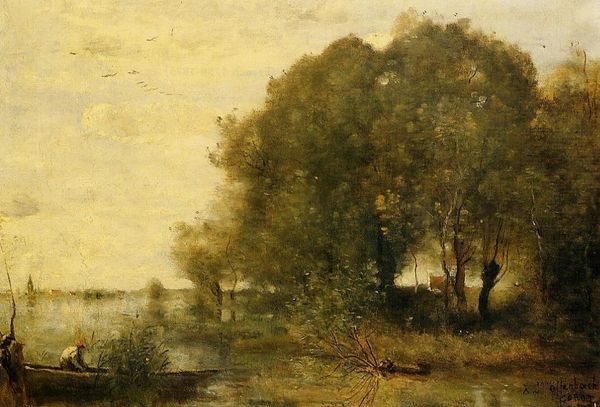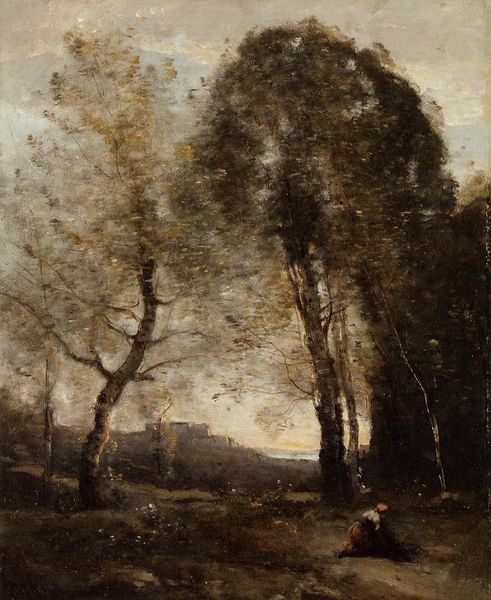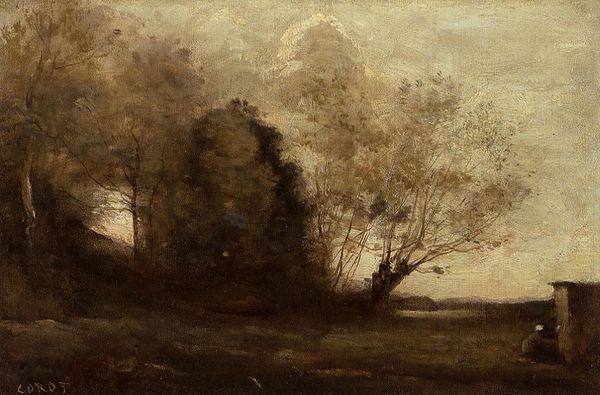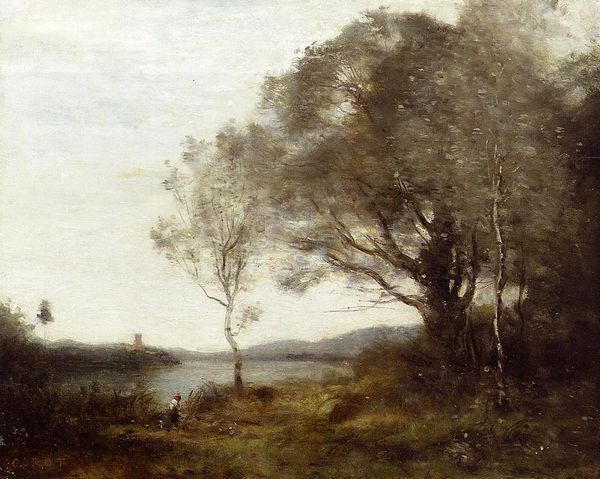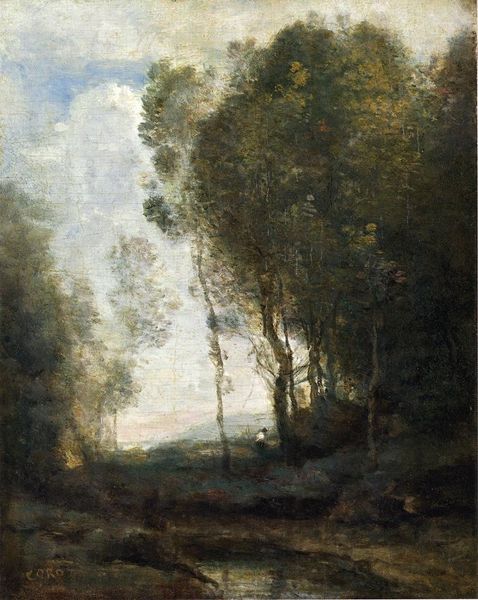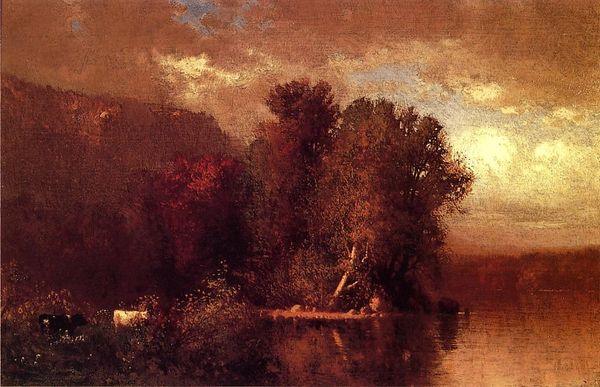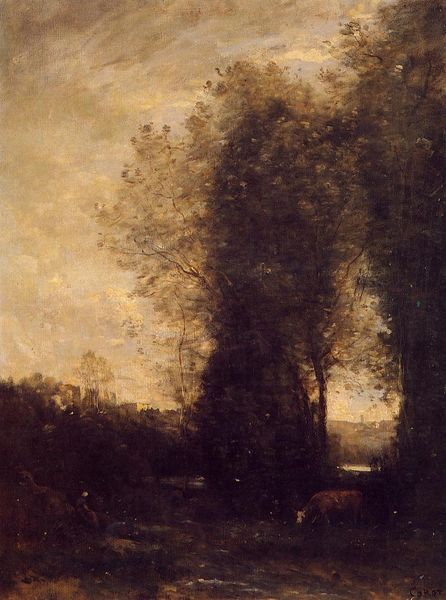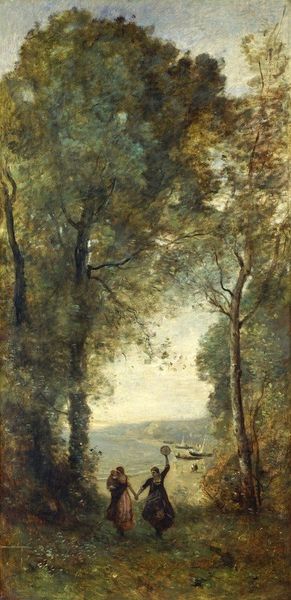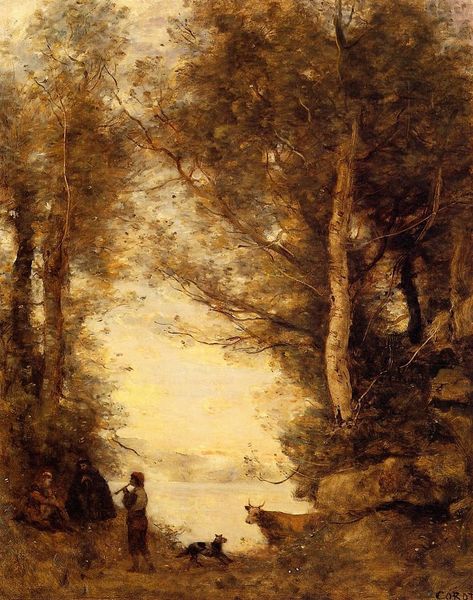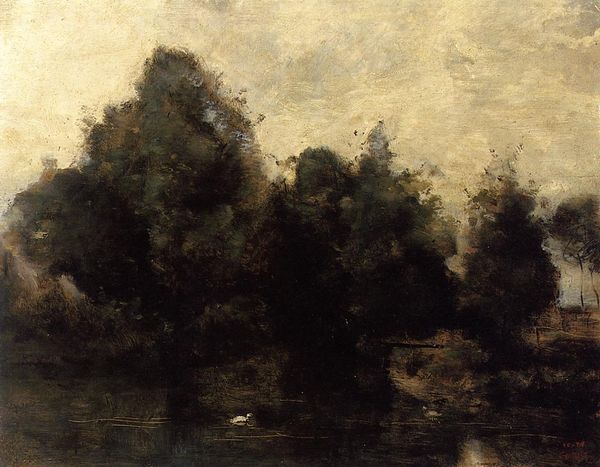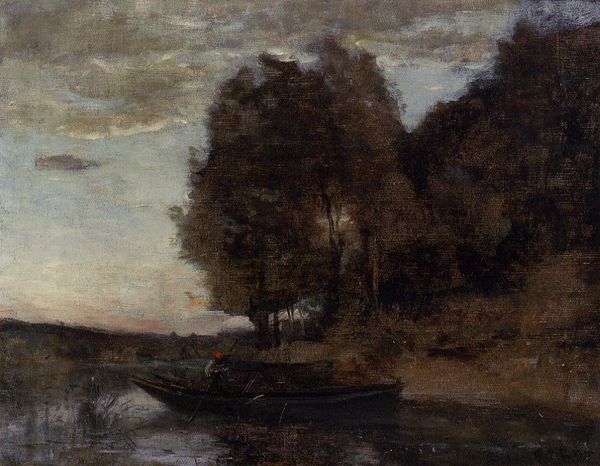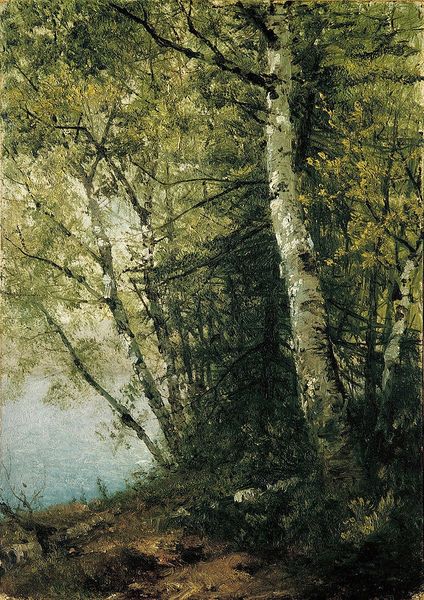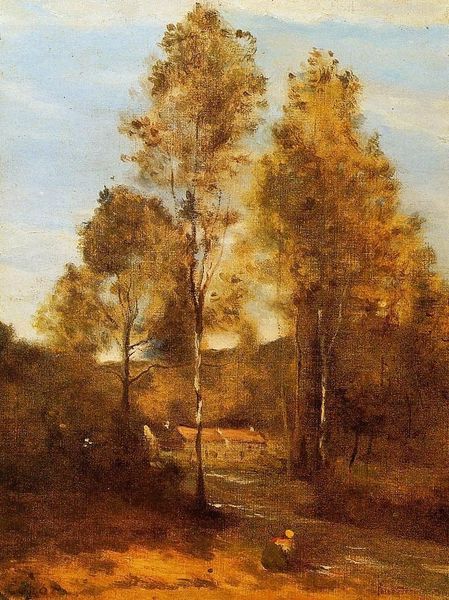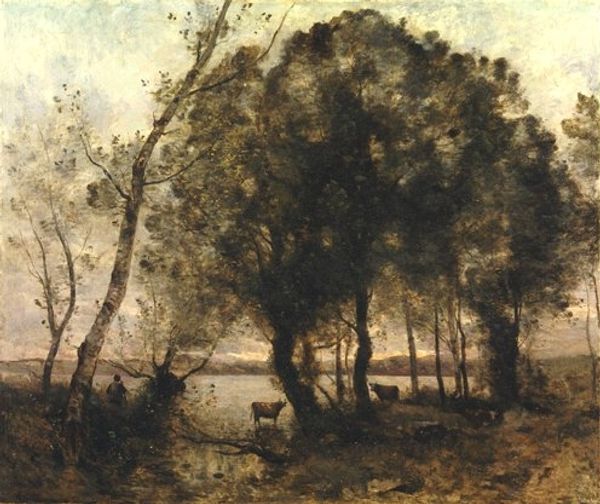
Goatherd Standing, Playing the Flute under the Trees 1855
0:00
0:00
jeanbaptistecamillecorot
Private Collection
Copyright: Public domain
Curator: Here we have Camille Corot's "Goatherd Standing, Playing the Flute under the Trees," created around 1855. The oil paint, thickly applied in areas, really conveys a sense of texture. Editor: It’s melancholic, wouldn’t you say? That subdued palette really casts a pensive mood, like twilight filtering through those heavily worked trees. Curator: Corot's work here represents an interesting intersection of romantic ideals and emerging plein-air techniques. Notice the delicate layering of the paint, particularly in the foliage, likely achieved by painting directly outdoors. We're seeing the increasing availability and portability of oil paints transforming art production. Editor: And the choice of subject - a shepherd, a traditional symbol of rustic life and pastoral beauty, placed in a fairly common setting, is meant for public appeal. These subjects were well-loved by an emerging bourgeoisie audience that longed for a simpler, less industrial world. There is a degree of social romanticism to this, for sure. Curator: Absolutely. You can see him balancing traditional subject matter with the increasingly important art market, too. The painting would have had a place within the domestic sphere of a bourgeois client as something natural and simple to enjoy at leisure. I’m also really struck by how the textures contrast, where some branches are smooth others coarse. Editor: It does speak to the material presence of art objects in the home and public space. In some ways, the way these landscapes became fashionable is fascinating when viewed as objects of desire that were ultimately shaped by a market. But there’s a sort of peaceful harmony there, regardless. The almost hazy impression created by his brushstrokes… Curator: It feels accessible to the viewer, doesn't it? It captures a feeling or an atmosphere that evokes contemplation in ways earlier painting techniques did not. Corot seems to want us to remember what painting actually is: a skilled craftsman spreading oils on linen to bring forth light and meaning in everyday encounters. Editor: Yes, his blending of reality and idealised romanticism forges a social memory from his works, I think. In the context of rapid industrial growth and social change, these are compelling visual meditations. Curator: Well said. It's fascinating to think about the various layers of influence and intention informing Corot's art. Editor: Indeed. There’s much more to that melancholy than initially meets the eye.
Comments
No comments
Be the first to comment and join the conversation on the ultimate creative platform.
